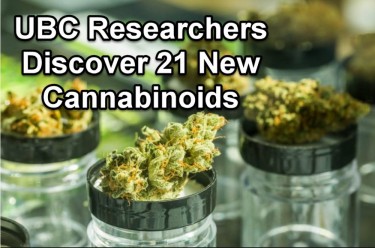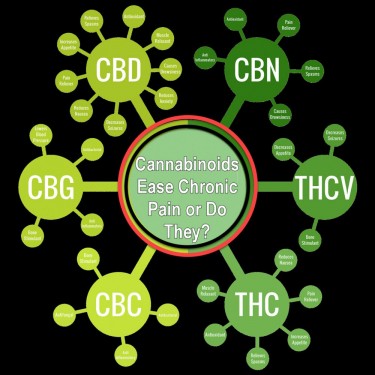
Major and Minor Cannabinoids – Which Do You Need To Know By Name?
How well do you know your cannabinoids?
Most people are familiar with the two most important cannabinoids – THC and CBD. However, cannabis is a complex plant with complex chemistry. As we explore these connections further, we begin to uncover the very nature of the experience we gain from ingesting the plant.
In today’s article, we’re going to take a “peek under the hood” to see what these cannabinoids are all about. In the near future, the classifications of “Sativa” and “Indica” will become less important when choosing your perfect strain.
It is wise to educate yourself about the intricacies of cannabis. This article is intended to give you a basic overview of the major and minor cannanoids.
This article was inspired by an article in the LA Times where they eloquently mine the cannabinoids using pop culture to get the point across.
THC
We’ll mainly start with THC because it’s one of the most famous cannabinoids out there. It’s what everyone is either trying to limit or get more of it.
THC is responsible for your “high” and comes in different forms. We have Delta-9-THC, which is what you get when you vaporize or smoke the plant. Then you have 11-hydroxy-THC, which happens when the liver processes it.
Delta-8-THC and Delta-10-THC are also enjoying great popularity, namely because they are currently not illegal under the Controlled Substance Act and can be obtained from hemp.
CBD
The second famous cannabinoid is CBD (cannabidiol). People call it the “medicinal cannabinoid” because it won’t get you high and it appears to help with many ailments. It’s also one of the few cannabinoids that has an FDA-cleared drug on the market.
CBD is a Nuero controller, it helps with anxiety, stress, seizure disorders and is available practically everywhere. This is also legal at the federal level.
CBG
CBG (cannabigerol) can turn into CBD or THC, depending on what happens to it. For this reason, it is sometimes referred to as the “mother cannabinoid”.
It also has similar effects to CBD, which is beneficial for people considering using it to fight cancer, IBS, and so on.
CBN
CBN (cannabinol) is a cannabinoid that occurs over time as the cannabinoids are broken down through oxidation. If you leave out your supply, CBN will begin to spread.
Smoke this CBN weed and you will have a powerful sleep aid. It also has antibacterial properties.
CBC
Next we talk about cannabichromes, which is really not very popular in the modern market and kind of illusory. It is reported to be similar to THC and CBD in its effects, except that it doesn’t have as strong a “narcotic feel” as THC alone.
It helps reduce inflammation and block pain.
THCv
THCv, or tetrahydrocannabivarin, is a cannabinoid that will get you high without cravings. Researchers have known about this cannabinoid since the 1970s.
This is still not as popular as THC – however, with its appetite suppressant effects, we can expect it to make its way into the “weight loss industry”.
THCa
All cannabinoids start out in their acidic form. THCa is essentially THC in its acidic form, which means it is still not psychoactive.
Recently, Dr. Mechoulam discovered great results with THCa. This is because the bioavailability of THC in its acidic form increases a thousand fold.
This means greater potential for pain relief and neurodegenerative relief. Although THC is in its acidic form, it also has no psychoactive properties. The main downside is that it is not a very stable cannabinoid, but this could soon be bypassed with “organic cannabinoid factories”.
Delta 8 THC
Delta-8 is currently in this limbo. It gets you high like regular Delta-9, except it’s not listed on the Controlled Substances Act. That means federally – it’s a legal high!
More importantly, Delta-8 can be derived from hemp, which makes it especially difficult to realize the potential of hemp.
Obviously, sooner or later lawmakers will sink their fangs into this substance and make it illegal again, but right now it’s one of the few legal cannabinoids that will get you high.
There’s more to come …
The more we explore this phenomenal plant, the more we discover!
Knowledge of these smaller cannabinoids only came to light a few years ago, and today there is much more detailed information about each of these cannabinoids mentioned here.
We’ll have to see how the federal government reacts to Delta-8-THC, but one thing is for sure – they won’t be able to ban it as entirely as they did Delta-9-THC.
The fact that a small molecular change could make a psychoactive substance illegal also points to the ridiculous nature of the CSA.
But what we have presented to you here today is only the tip of the proverbial iceberg. As we continue to open this box of knowledge and expand our understanding of cannabinoids, terpenoids, and flavonoids, our methods of classifying cannabis will also experience this type of transformation.
Soon we will ask about certain proportions of certain cannabinoids in order to achieve certain “highs” or medicinal treatments. Not to mention the specific cannabis-based drugs that are prepared in pharmaceutical laboratories around the world.
We are about to enter a new era of cannabis exploration – we have to see how the rest of 2021 plays out, but I see that we are already going through a massive change – and in some cases, not for the better!
In the meantime, it is important to understand these small differences in order to become a more conscious consumer.
CANNABINOIDS AND RESEARCH, READ MORE ..

RESEARCHERS DISCOVER 21 NEW CANNABINOIDS, READ THE LIST!
OR..

THE CANNABINOIDS FOR CHRONIC PAIN, READ THE LIST HERE!

Post a comment: